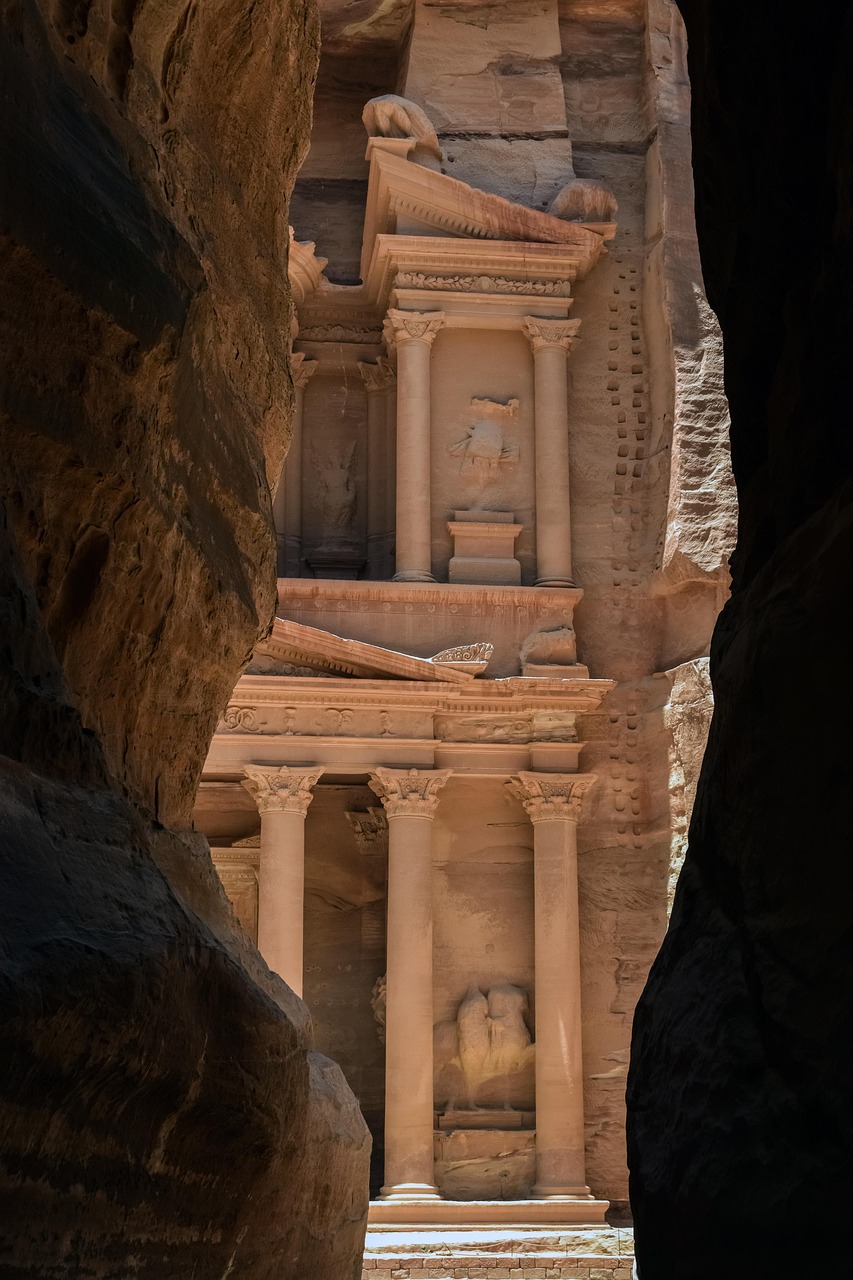Indian storytelling is a treasure trove of linguistic and literary wonders that spans across centuries. From the ancient Sanskrit texts to classical epics, and even contemporary authors, India’s rich literary heritage continues to captivate audiences worldwide. But what truly sets Indian storytelling apart is its deep-rooted tradition of oral storytelling. Passed down through generations, these tales not only entertain but also educate and preserve cultural values. In this article, we will explore the significance of oral tradition in Indian storytelling and the enduring impact it has on Indian culture. Get ready to embark on a journey where words are more than just words, but powerful conduits that connect past, present, and future.

The Role of Oral Tradition in Indian Culture
India, a land of diverse cultures and traditions, has a rich heritage of oral tradition that has played a significant role in preserving its cultural heritage, transmitting knowledge and values, and building a sense of community and social cohesion among its people. Oral tradition, passed down from one generation to another through verbal storytelling, has been a powerful tool in shaping and preserving the unique identity of India.
Preservation of Cultural Heritage
Oral tradition has been instrumental in preserving India’s cultural heritage. Through the art of storytelling, myths, legends, and folktales that are deeply rooted in Indian culture have been handed down from one generation to another. These stories not only entertain but also serve as a link to the past, connecting individuals to their ancestors and ancestors to their descendants. The oral transmission of cultural knowledge, customs, rituals, and beliefs has ensured the survival of these cultural elements even in the face of modernization and globalization.
Transmission of Knowledge and Values
Oral tradition has been a primary medium through which knowledge and values have been transmitted in Indian society. From ancient times, important texts and scriptures, such as the epics Ramayana and Mahabharata, have been orally transmitted by storytellers, known as bards or sages. This oral transmission has allowed diverse communities to pass on religious, moral, and ethical teachings, thus contributing to the moral fabric of Indian society. The emphasis on values like truth, righteousness, and compassion is deeply ingrained in the oral tradition of storytelling, imprinting them in the minds of the listeners.
Community Building and Social Cohesion
Oral tradition, with its communal nature, has played a vital role in building a sense of community and social cohesion among the people of India. Oral storytelling has been a shared experience that brings individuals together, strengthening the bonds among community members. The act of gathering around a storyteller and listening to the tales not only fosters a sense of belonging but also promotes dialogue, discussion, and a shared understanding of cultural values. It creates a space where individuals feel connected to their roots and each other, enhancing social harmony and a collective identity.
Oral Tradition as a Source of Indian Mythology and Folklore
Indian mythology and folklore are deeply rooted in oral tradition, which has been a primary source of these stories for centuries. Through the oral transmission of epics, puranas, folktales, and legends, the cultural heritage and religious beliefs of India have been preserved and passed on.
Indian Mythology: Epics and Puranas
Epics such as the Ramayana and Mahabharata, along with the puranas (ancient texts containing mythological stories) have been orally transmitted through generations, keeping alive the rich mythological heritage of India. These stories of gods, goddesses, demons, and heroic figures like Lord Rama and Lord Krishna have shaped the religious and cultural consciousness of the Indian people. The oral retelling of these mythological tales not only conveys religious teachings but also provides moral and philosophical insights that are relevant to the contemporary world.
Folktales and Legends
Indian folklore, comprising a plethora of regional tales and legends, has thrived through oral tradition. Folktales, like Panchatantra and Jataka tales, enchant listeners with their timeless wisdom and moral lessons. They entertain and educate, imparting values and life lessons that are relevant to various aspects of human existence. The oral transmission of these folktales has ensured their preservation and continued impact on Indian society, fostering a sense of cultural pride and identification.

The Art of Storytelling in Indian Oral Tradition
The art of storytelling is a central aspect of Indian oral tradition, requiring skill, creativity, and a deep understanding of the audience. Through the use of performance, music, chanting, and audience participation, storytellers captivate listeners and bring stories to life, making the experience immersive and memorable.
Importance of Performance and Delivery
Storytellers in Indian oral tradition are not mere reciters of stories but rather performers who engage the audience through their delivery. They utilize expressive gestures, intonation variations, and dramatic pauses to convey emotions, create suspense, and evoke laughter or tears. The art of storytelling lies not only in narrating a story but also in creating an atmosphere where listeners are transported to another world, experiencing the story in vivid detail.
The Role of Music and Chanting
Music and chanting play a significant role in Indian oral tradition, enriching the storytelling experience. In many Indian communities, storytelling is accompanied by traditional musical instruments, such as the tabla, sitar, or harmonium. These instruments create a rhythmic backdrop that enhances the narration and adds depth to the emotions expressed in the story. Chanting of mantras and verses further elevates the storytelling experience, making it a spiritual and sacred journey for the listeners.
Audience Participation and Interaction
Unlike passive consumption of stories in other forms of media, Indian oral tradition encourages active audience participation and interaction. Listeners are encouraged to respond, ask questions, and engage in dialogue with the storyteller. This active involvement not only creates a sense of community but also enables the listeners to relate the stories to their own lives, thus deepening the impact and understanding of the narrative.
The Magical Power of Words in Indian Oral Tradition
Words hold a sacred and spiritual significance in Indian oral tradition. Through the recitation of mantras and chanting, the power of words is harnessed, creating transformative experiences and invoking divine forces.
Sacred and Spiritual Significance
In Indian oral tradition, words are seen as carriers of divine energy and power. The recitation of sacred mantras, prayers, and chants is believed to invoke spiritual blessings and connect individuals to higher realms of consciousness. The vibrational quality of the words is thought to create a resonance that aligns the individual with the universal forces, fostering spiritual growth and well-being.
Mantras and Chanting
Mantras, with their rhythmic repetition of sacred syllables or phrases, are an integral part of Indian oral tradition. They are chanted with devotion and reverence in religious rituals, meditation, and storytelling. The repetition of mantras is believed to purify the mind, bring focus, and unleash dormant energies within the practitioner. Chanting mantras not only enhances the storytelling experience but also serves as a spiritual practice, providing a path to transcendence and inner transformation.

Preserving Oral Traditions in Modern India
While oral tradition continues to be an inherent part of Indian society, it faces challenges in the modern era. However, efforts are being made to preserve and promote oral traditions through innovative approaches and utilization of modern mediums.
Challenges and Solutions
The advent of modern technology, globalization, and changing lifestyles have posed challenges to the survival of oral traditions in India. The oral transmission of knowledge and stories is often replaced by written texts, digital media, and westernized forms of entertainment. However, to overcome these challenges, various initiatives have been undertaken. Oral history projects, cultural festivals, and the establishment of oral tradition archives have helped in the documentation and preservation of diverse oral traditions. Furthermore, the integration of oral traditions into educational curricula and the promotion of oral storytelling in schools and communities have ensured their continuity and relevance in the modern Indian context.
Oral Traditions in Literature and Media
Oral traditions have also found their way into Indian literature and media, contributing to their preservation and revitalization. Many contemporary Indian authors draw inspiration from oral traditions, incorporating folktales, myths, and legends into their works. This infusion of oral traditions into written literature keeps them alive in the literary landscape and introduces them to a wider audience. Additionally, the use of media platforms such as radio, television, and the internet has provided a new avenue for oral storytelling, reaching a larger audience and keeping the essence of oral tradition alive in the digital age.
The Impact of Oral Tradition on Indian Literature and Performing Arts
Indian oral tradition has had a profound influence on Indian literature and performing arts. It has inspired literary forms, styles, and artistic expressions, and has undergone transformations in various creative mediums.
Influence on Literary Forms and Styles
Indian literature has been greatly influenced by oral tradition. The use of storytelling techniques, rhythm, and poetic elements derived from oral tradition can be observed in various literary forms such as poetry, drama, and novels. The episodic structure, intricate narratives, and interwoven subplots seen in Indian epics have been imitated and adapted by authors, creating a unique literary landscape. The oral tradition’s emphasis on vivid imagery, metaphorical language, and dialogues has shaped the literary style of many Indian authors, giving rise to a distinct literary tradition.
Adaptations and Transformations in Performing Arts
Indian oral tradition has also played a transformative role in shaping the performing arts. Traditional dance forms like Kathakali and Bharatanatyam borrow heavily from mythological stories, narrated through expressive gestures, facial expressions, and body language. These dances bring to life the characters and stories from oral traditions, capturing the essence of the narratives. Similarly, folk theater forms like Yakshagana and Nautanki feature adaptations of oral stories, presenting them through music, dance, and theatrical performances. The influence of oral tradition can be seen in the costumes, makeup, and overall aesthetics of these performing arts, contributing to their distinctive appeal.

Oral Tradition as a Form of Resistance and Cultural Assertion
In addition to its role in preserving cultural heritage, oral tradition has served as a form of resistance and cultural assertion, particularly for indigenous communities in India.
Preserving Indigenous Knowledge
For many indigenous communities in India, oral tradition has been a powerful means of preserving and safeguarding their indigenous knowledge. Passed down from one generation to another, oral traditions have helped maintain and transmit traditional knowledge about medicinal plants, agricultural practices, hunting techniques, and spiritual beliefs. This preservation of indigenous knowledge through oral tradition has been crucial in resisting the erosion of their cultural heritage and asserting their distinct identities in the face of societal and cultural changes.
Protecting Cultural Identity
Oral tradition has also been instrumental in protecting the cultural identity of various communities in India. For marginalized communities and minorities, oral tradition serves as a medium through which cultural narratives, histories, and experiences can be shared and preserved. Through the oral transmission of their stories, these communities assert their unique heritage and challenge dominant narratives that may overlook or exclude their experiences. Oral tradition, therefore, becomes a form of resistance against cultural homogenization and a way to strengthen community ties and self-identity.
The Role of Oral Tradition in Education and Learning
Oral tradition has a significant role to play in education and learning, offering unique educational and pedagogical value and enhancing cognitive skills and memory.
Educational and Pedagogical Value
The interactive and participatory nature of oral tradition makes it an effective educational tool. In a classroom setting, oral storytelling stimulates active listening, critical thinking, and imagination in students. It encourages them to engage in dialogue, ask questions, and interpret stories, fostering a deeper understanding of the subject matter. Furthermore, through oral tradition, cultural values, moral lessons, and historical events can be conveyed in a captivating and memorable way, making learning an enjoyable experience.
Enhancing Cognitive Skills and Memory
Research has indicated that the oral transmission of information enhances cognitive skills and memory. When stories are orally presented, listeners are required to actively process and retain information, improving their cognitive capabilities. The rhythm, repetition, and melody in oral tradition aid in memory retention, helping individuals recall information more effectively. Additionally, the engaging and interactive nature of oral storytelling stimulates multiple senses, making the learning experience more holistic and impactful.

The Global Influence and Recognition of Indian Oral Tradition
Indian oral tradition has not only influenced the cultural landscape within India but has also garnered international recognition and acknowledgment in world literature and storytelling.
Acknowledgement in World Literature and Storytelling
The rich heritage of Indian oral tradition has found resonance in world literature and storytelling. Influential literary works such as “One Thousand and One Nights” and “The Canterbury Tales” draw inspiration from the oral storytelling tradition prevalent in different cultures, including India. These works reflect the enduring appeal of oral storytelling and the universal human longing for narratives that transcend time and boundaries. Indian oral tradition, with its unique narratives and storytelling techniques, continues to inspire and captivate global audiences, highlighting its significance in the world of literature and storytelling.
Oral Tradition Beyond India: Comparative Perspectives
The impact of Indian oral tradition extends well beyond its borders. Various cultures across the globe have their own vibrant tradition of oral storytelling, sharing similarities and differences with Indian oral tradition. Comparative studies and cross-cultural dialogues between different oral traditions offer insights into the universal aspects of storytelling, its role in cultural preservation, and its power to convey emotions, values, and beliefs. Such exchanges contribute to a deeper understanding of oral traditions as a collective human heritage.
Preserving and Safeguarding Oral Tradition for Future Generations
As oral tradition faces challenges and changes in the modern world, concerted efforts are needed to preserve and safeguard it for future generations. Various initiatives, projects, and promotion strategies have been employed to ensure the continuity and relevance of oral tradition.
Oral History Projects and Archives
Oral history projects and archives have been instrumental in documenting and preserving diverse oral traditions. Through these initiatives, storytellers from different communities are recorded and their stories are documented, creating a valuable repository of oral knowledge and cultural heritage. These archives provide a resource for future researchers, educators, and community members to access and learn from oral traditions, ensuring their preservation and dissemination.
Promoting Oral Tradition in Schools and Communities
To uphold the continuity of oral tradition, it is crucial to promote and integrate it into educational curricula and community programs. By incorporating oral storytelling into schools and educational institutions, children can be exposed to the rich cultural heritage of their country and develop an appreciation for oral traditions. Community programs, cultural festivals, and storytelling events can serve as platforms for oral storytellers to showcase their skills, pass on their knowledge, and inspire future generations to carry forward the oral tradition.
In conclusion, oral tradition holds a significant place in Indian culture, playing a multi-faceted role in preserving cultural heritage, transmitting knowledge and values, building communities, and fostering social cohesion. It serves as a source of Indian mythology and folklore, with its art of storytelling captivating audiences through performance, music, and audience participation. The magical power of words in Indian oral tradition adds a sacred and spiritual dimension, while its impact on Indian literature, performing arts, and educational pedagogy is evident. Oral tradition also acts as a form of resistance and cultural assertion, preserving indigenous knowledge and protecting cultural identities. Its global influence and recognition reflect the universal appeal of storytelling, with efforts being made to preserve and safeguard oral tradition for future generations through archives, educational initiatives, and community promotion. In the ever-changing world, the importance of oral tradition remains steadfast, continuing to shape the cultural landscape of India.
